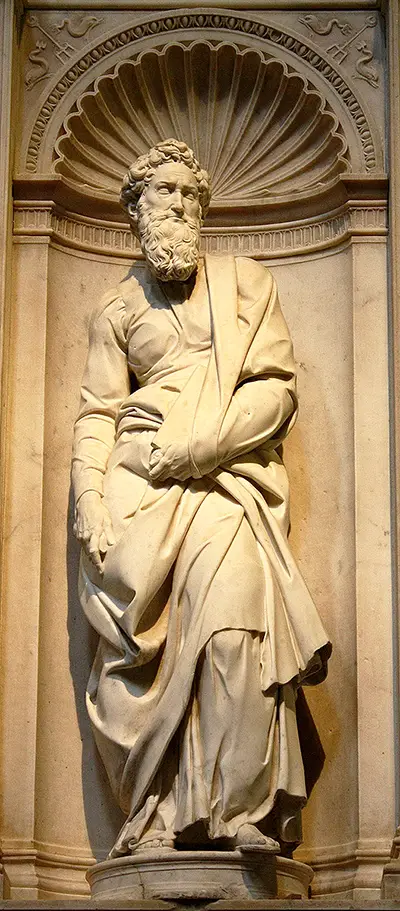Michelangelo himself was one of the true masters of European art history, impressing in a wide number of artistic disciplines across his long lifetime. He would produce a good number of fresco paintings in various installations as well as a plethora of sculptures, some of which had intended destinations just as with St Paul as displayed here. He would become somewhat of a celebrity within his own nation and would receive an endless supply of commissions once his reputation had risen to a level never seen before. Today his creations are celebrated just as passionately as they were all those centuries ago and they possess astronomical values, though rarely come up for sale with few willing to part with them. The nature of installed artworks has ensured that a good number of the artist's work remains within Italy, though there are many duties that come with maintaining and protecting such artistic treasures.
Andrea Bregno was commissioned initially to complete the altarpiece, two decades before Michelangelo would become involved in the project. Cardinal Francesco Todeschini Piccolomini desired a tomb for himself and understandably desired the finest sculptors for this task. He would experience continued problems in managing the project, which started with the ill health of Bregno, which forced the sculptor to discontinue his own contributions. By that stage he had already completed a large amount of the altarpiece, but there were still individual figures to decorate the display that would now need someone else's involvement. A number of contracts and agreements over the altarpiece would be broken for a variety of reasons, but Michelangelo was still able to produce several pieces for it, including St Paul as shown here. There would be a number of further statues that were intended to be completed by the artist which were never worked on, and so eventually Michelangelo's contract was annulled.
In terms of organising roles for the Piccolomini Altarpiece, Michelangelo chose to give more of his own attention to the sculptures that were to be placed lower, as these would be seen by more people once the final construction was unveiled. He then willingly allowed others to complete elements that were positioned higher up, though Michelangelo would keep a close eye on each one's progress to ensure that there was no danger of his own reputation being tarnished or for the other sculptors to diverge from a consistent path. Marble was used throughout, and this was a preference for most sculptors at this time, meaning it would not have been hard for him to find willing contributors. Typically, he would call upon some of his paid assistant hands who would feature many times alongside his own work, normally under his direct guidance.


